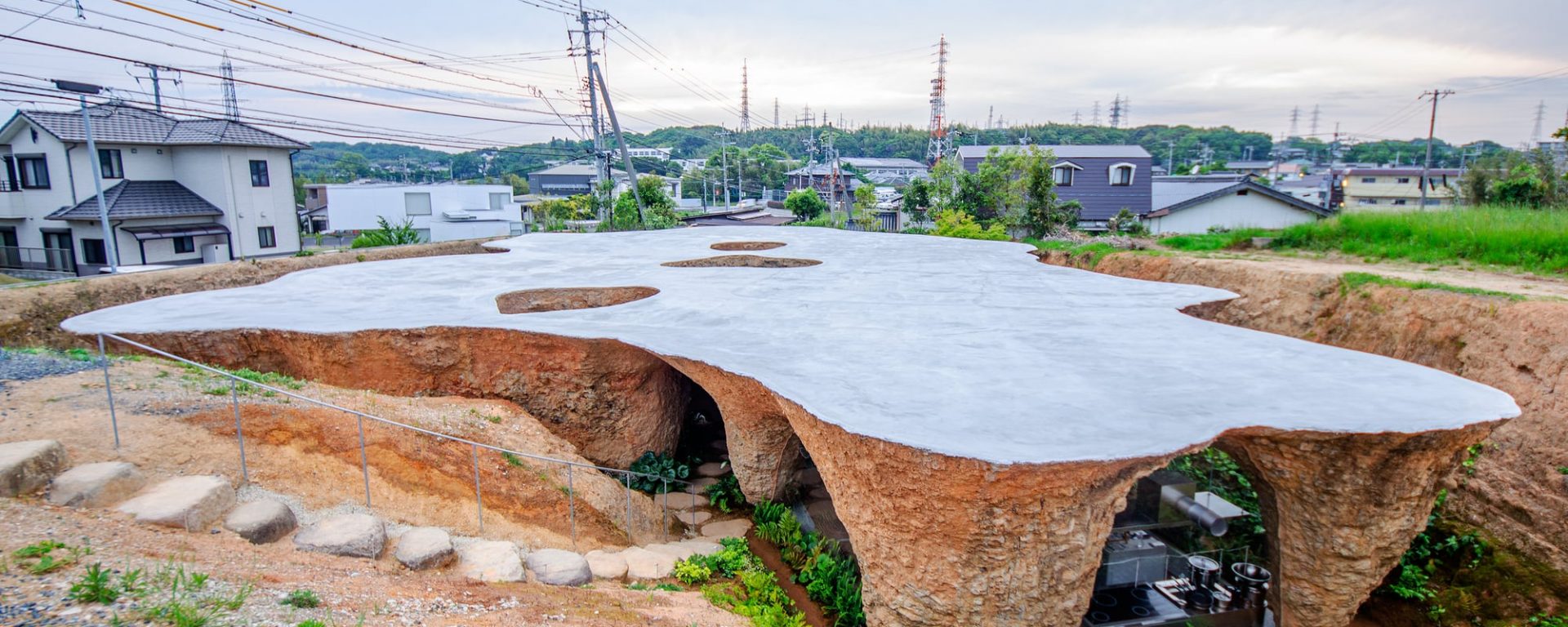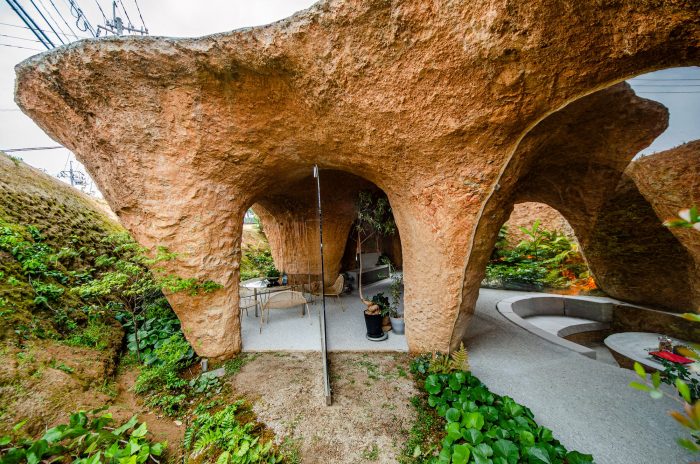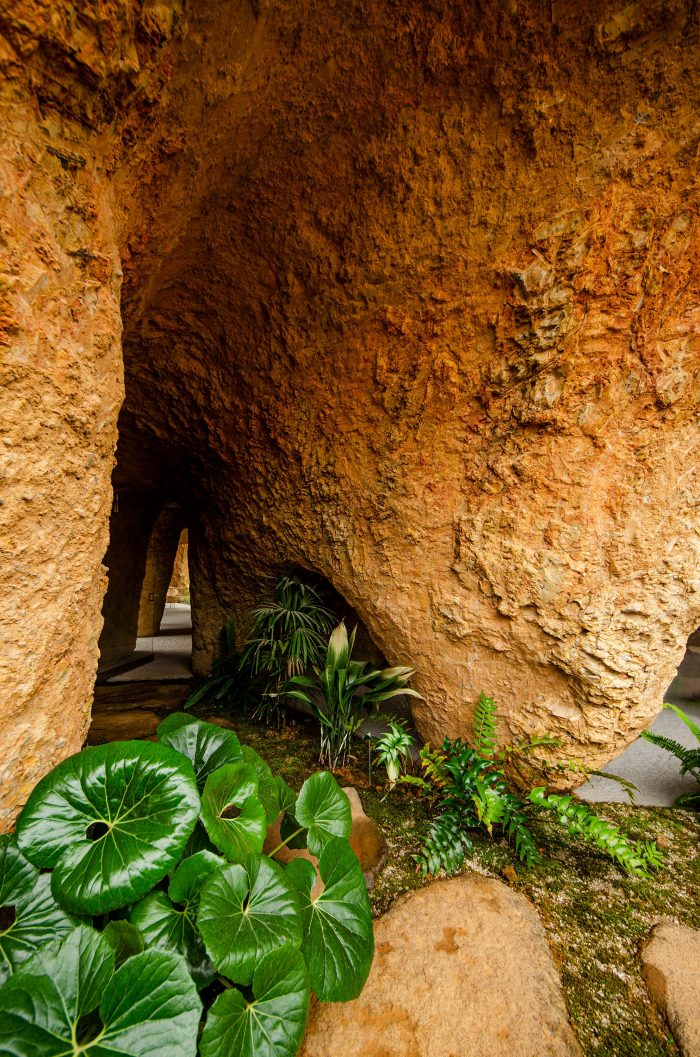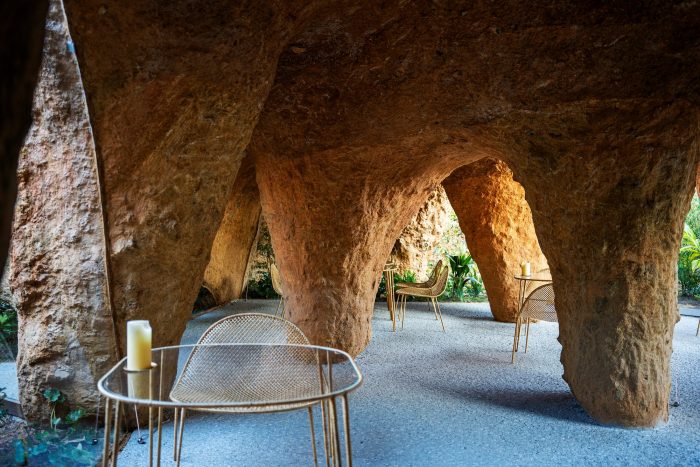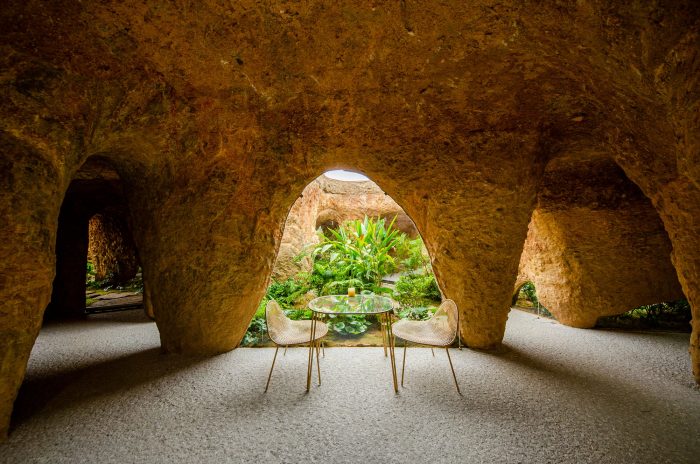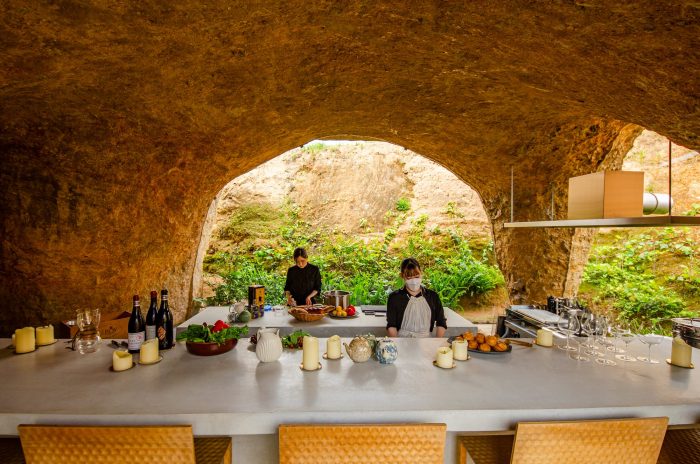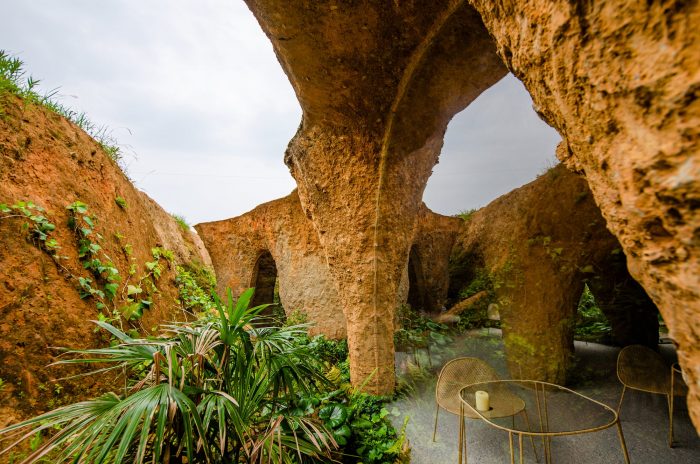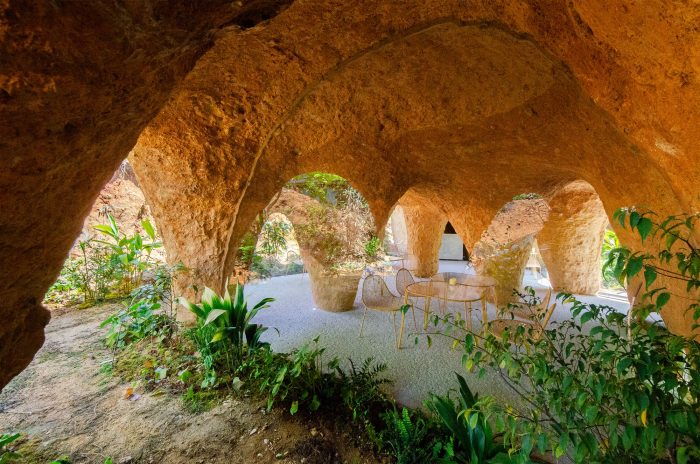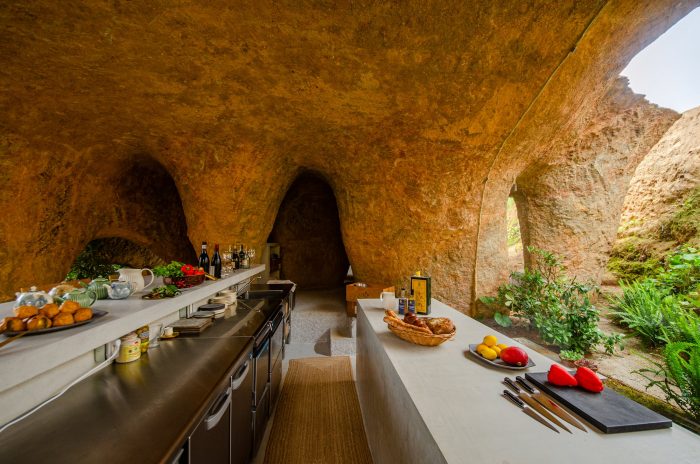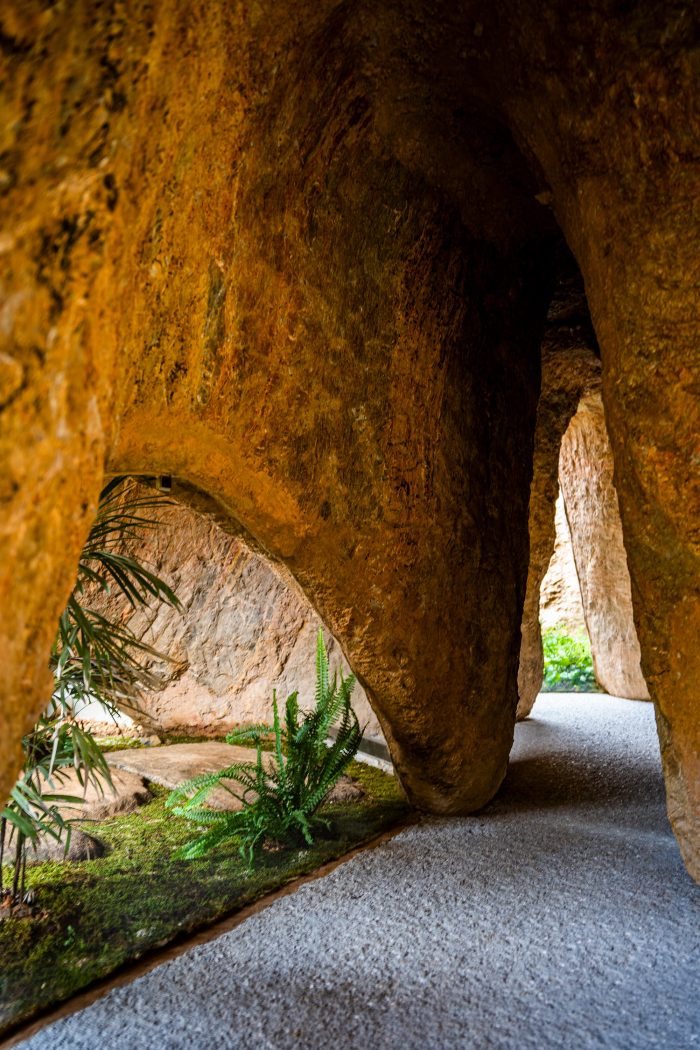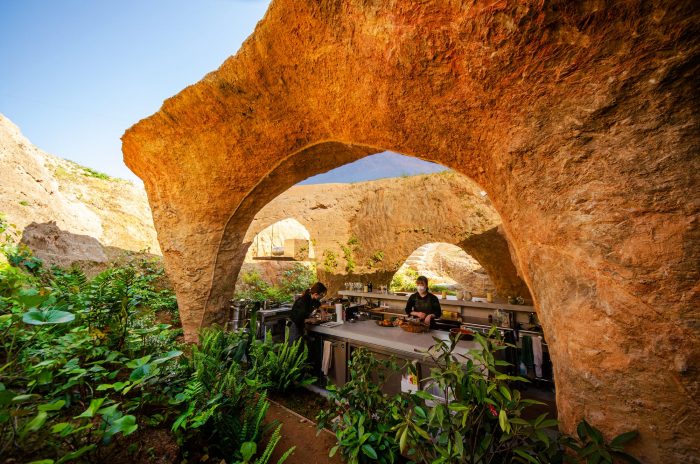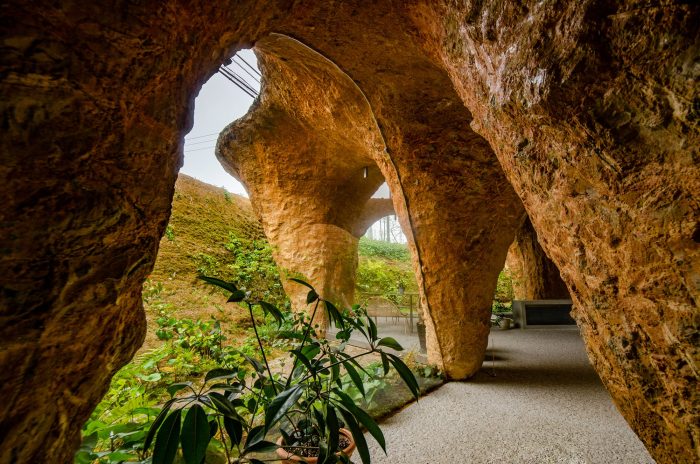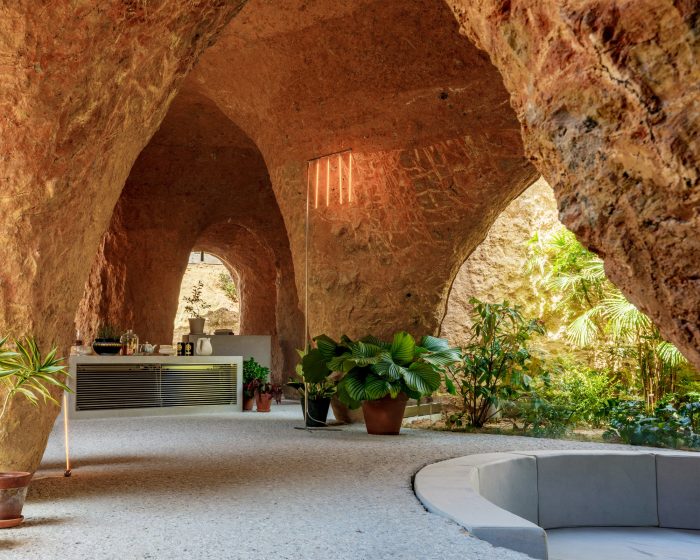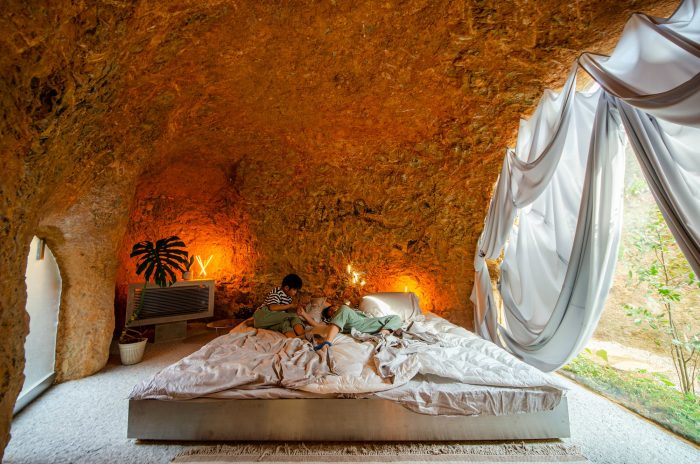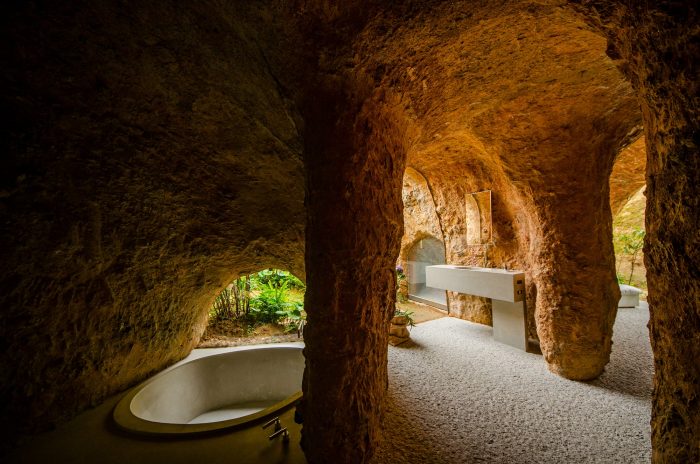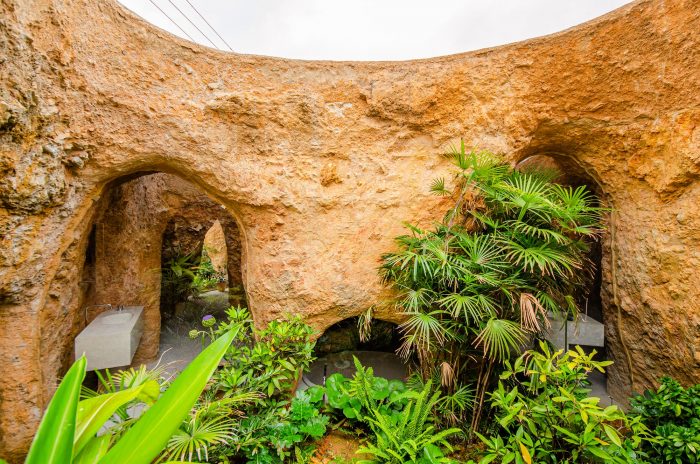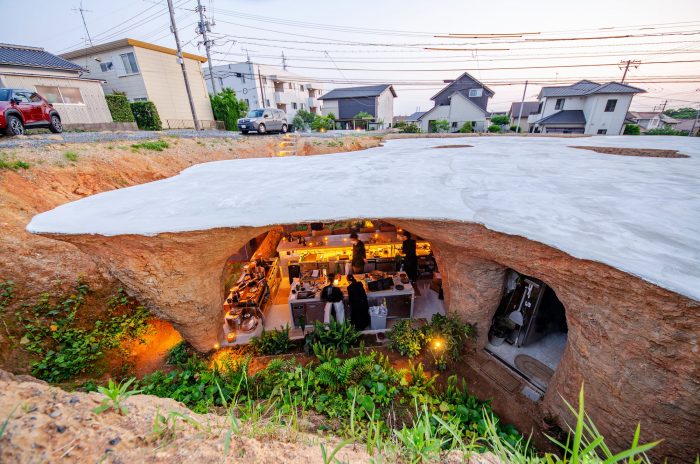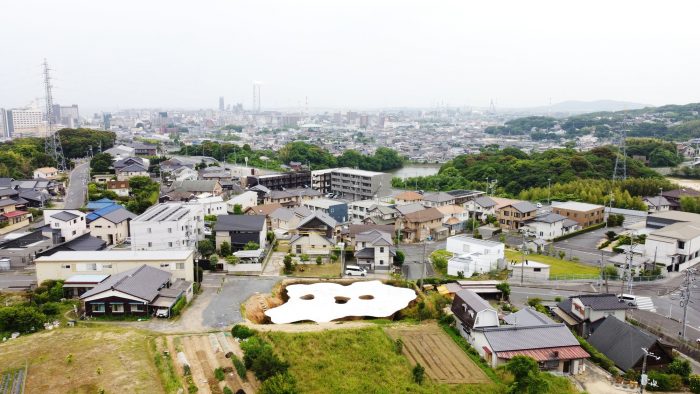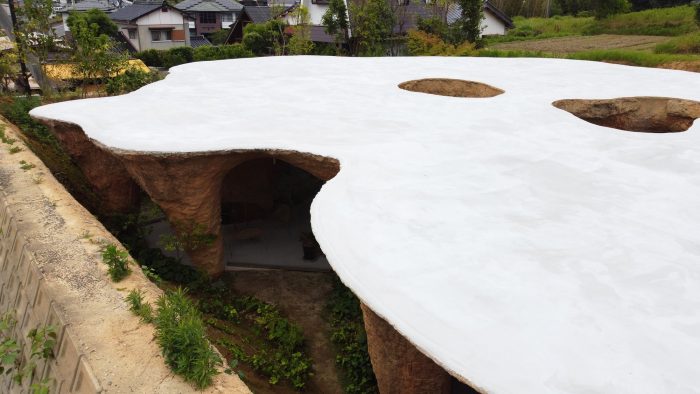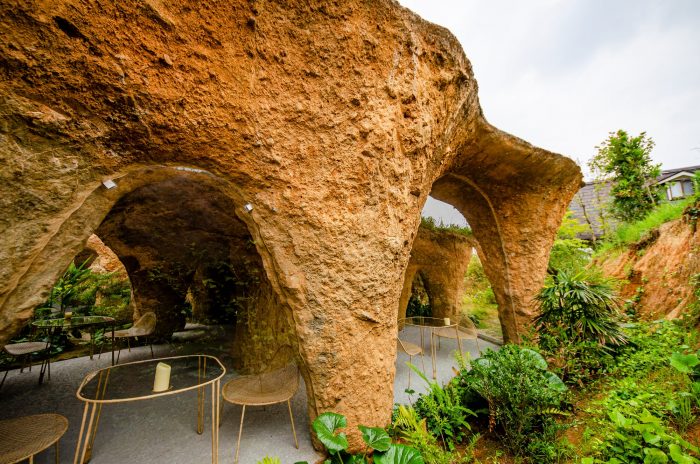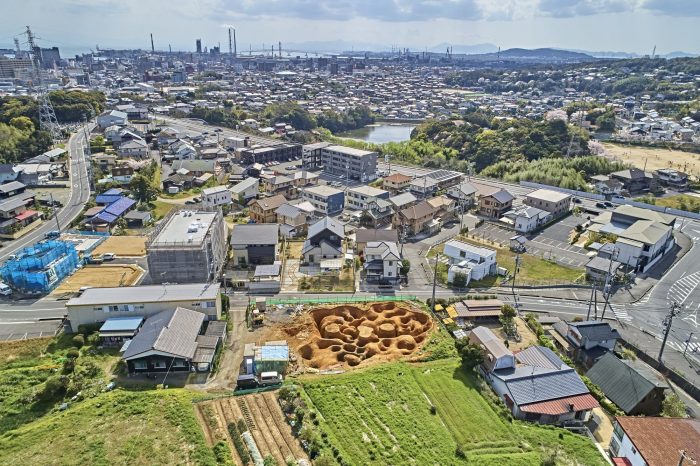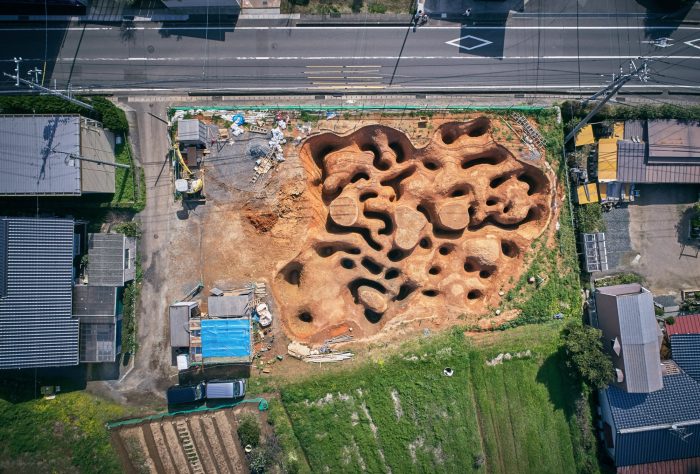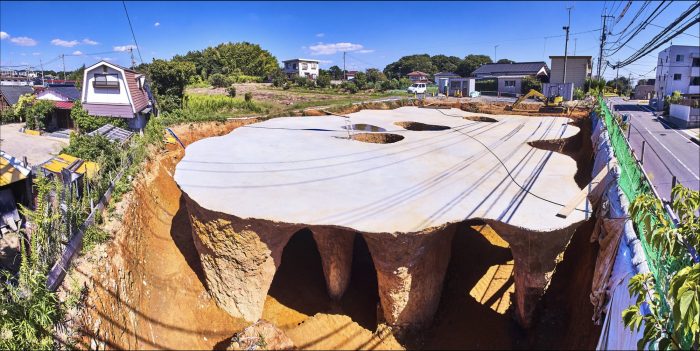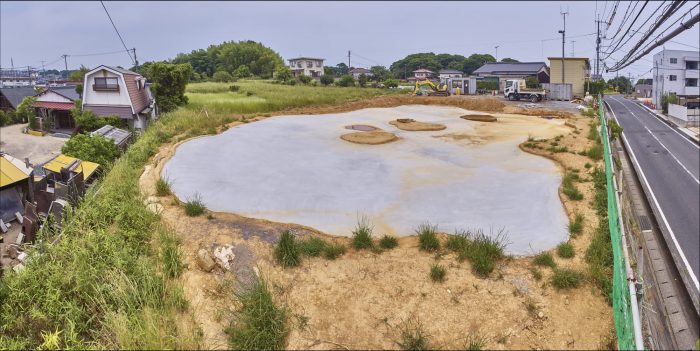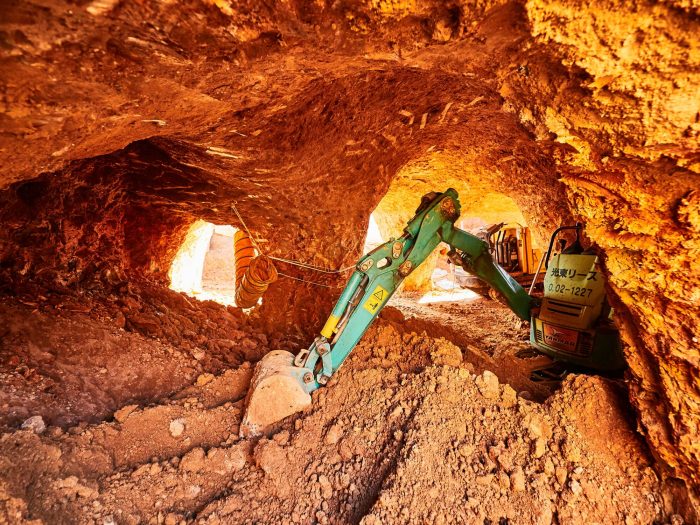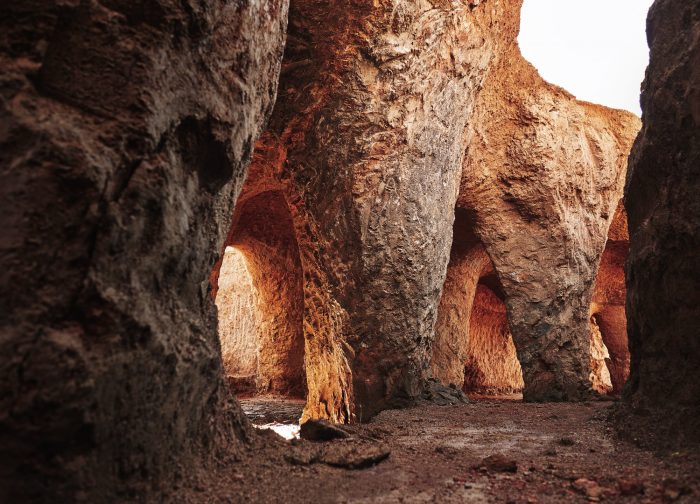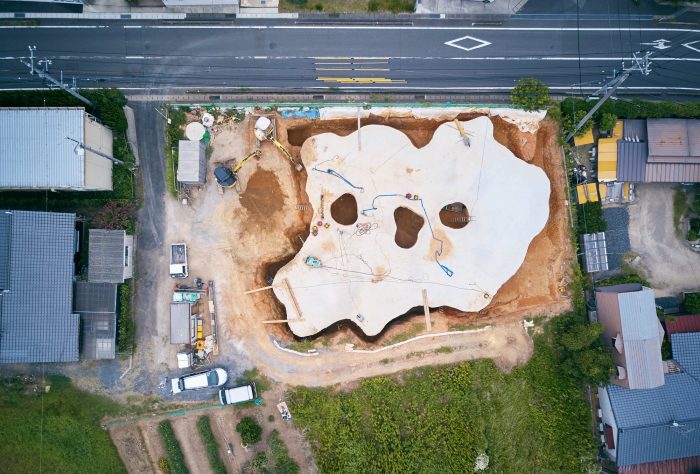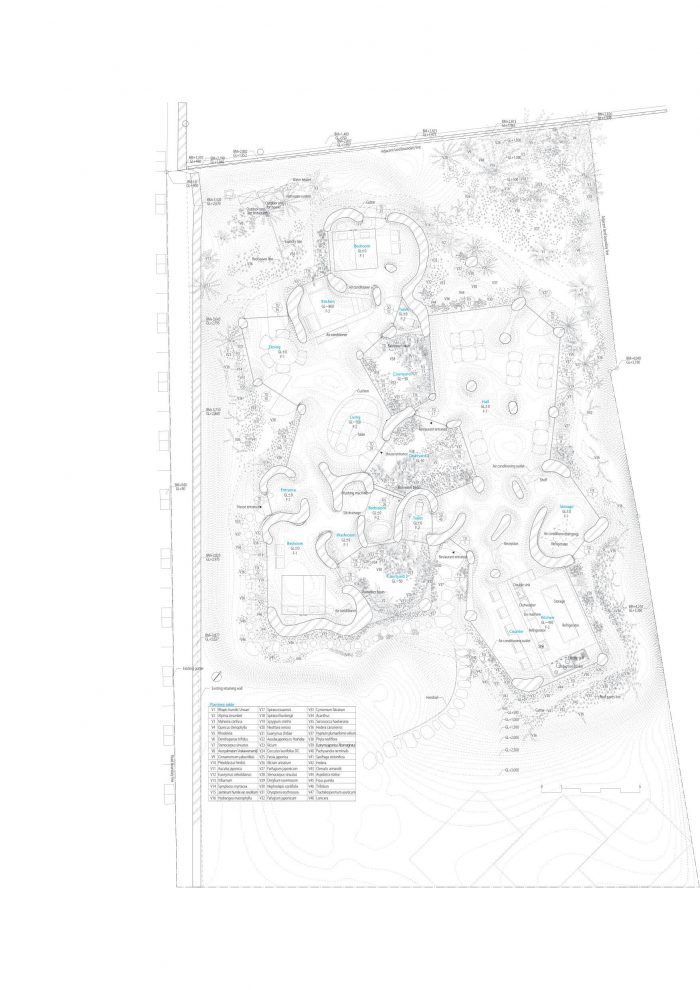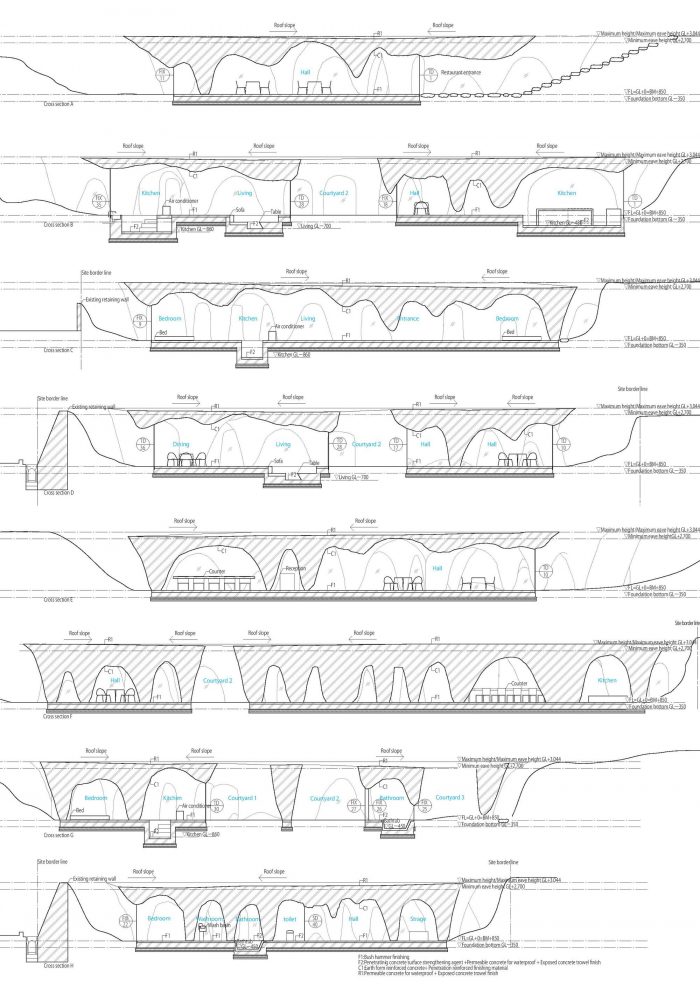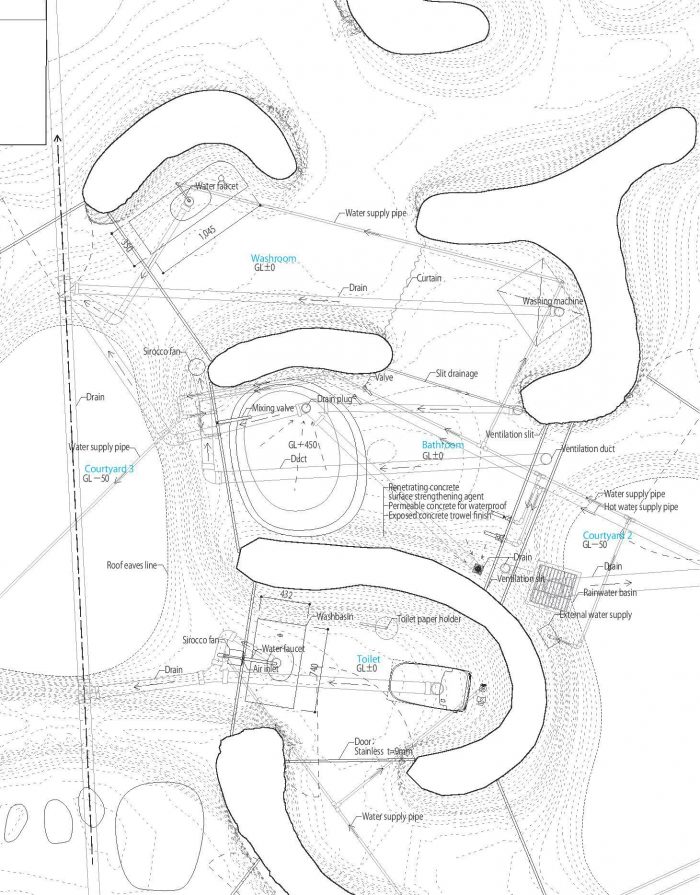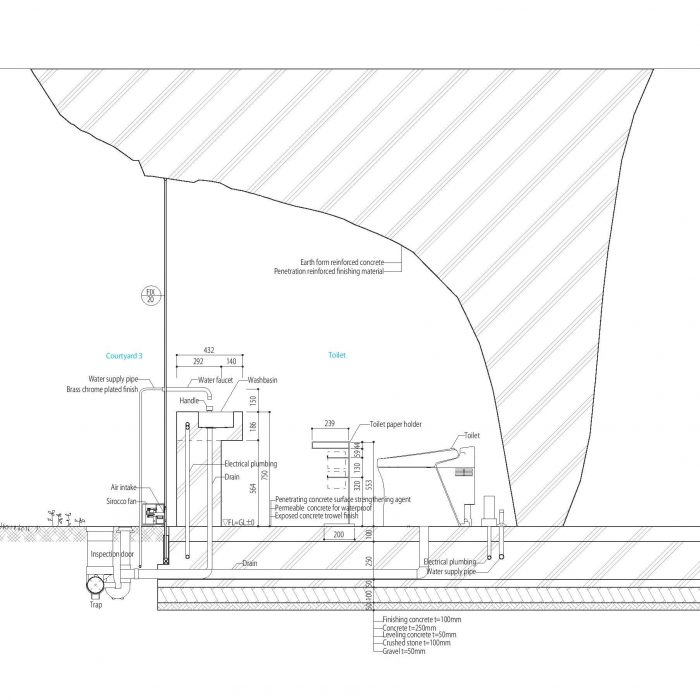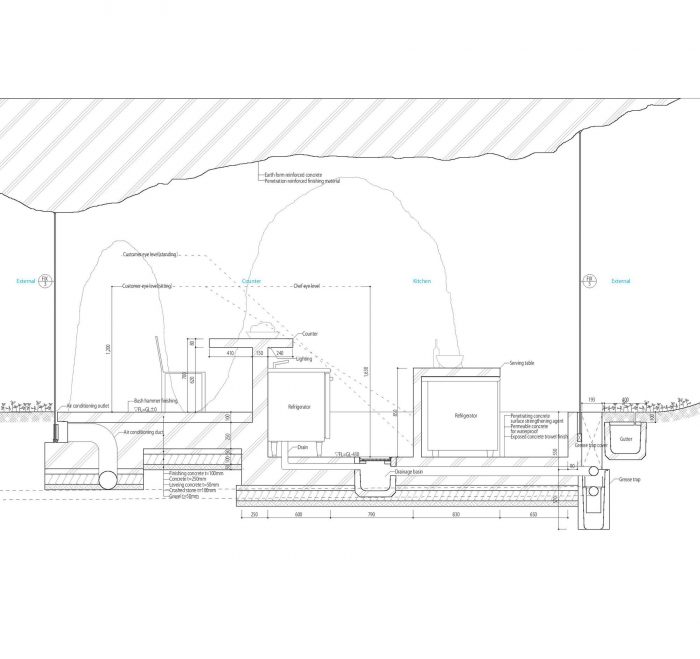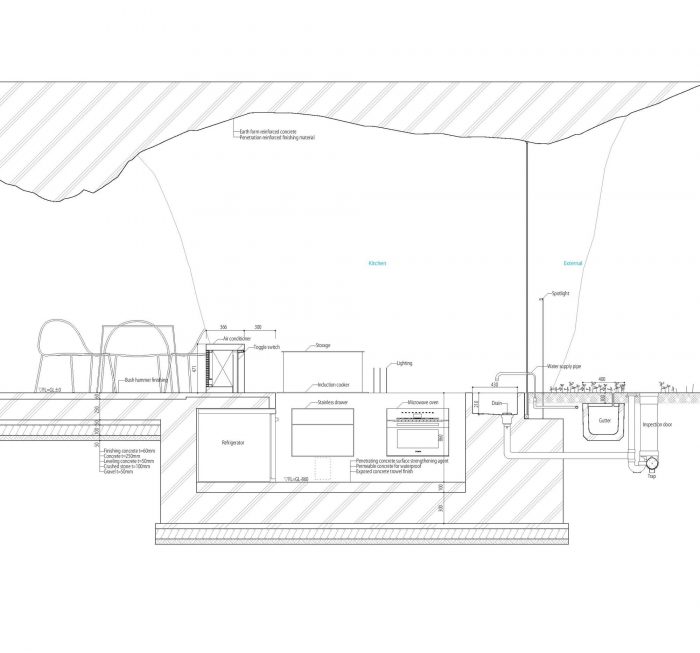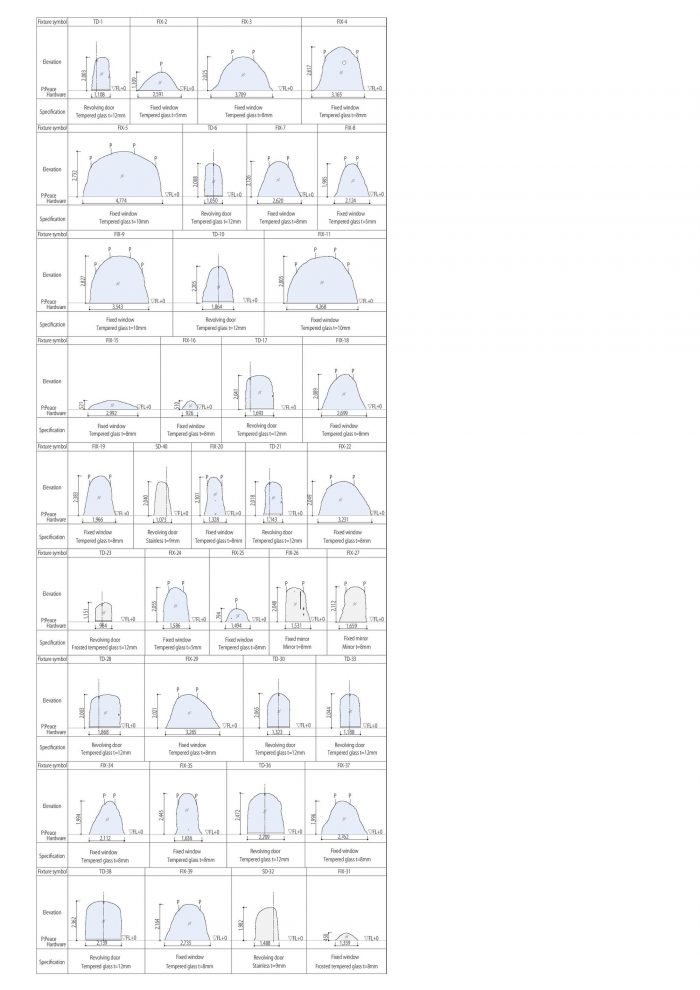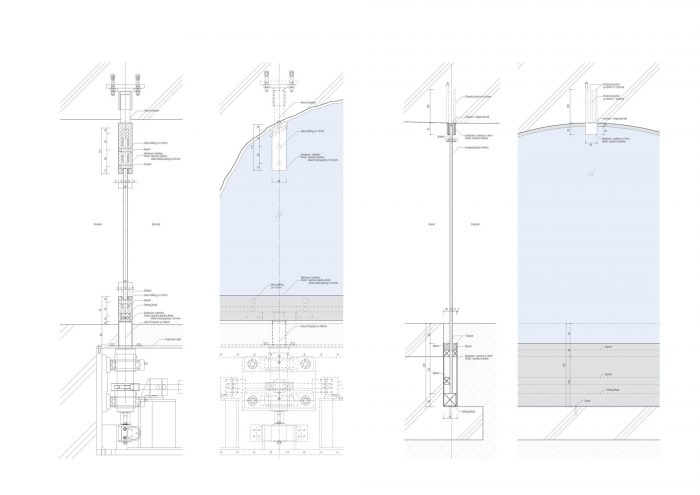该项目是为一个法国餐馆老板建造的住宅/餐厅。他是我的一个老朋友,是他委托我设计餐厅的桌子的。我被要求设计一个尽可能 “重 “的建筑。他说:”我想要一个建筑,它的沉重感会随着时间的推移而增加,”他说。他说:”它不能是人为的光滑,而是具有自然界的粗糙感的东西。正宗的美食需要这样一个地方”。他还告诉我,”它必须看起来好像它已经在那里,并将在那里持续最久”。他的想法是创建一个全新的历史悠久的餐厅。他渴望有一个既是房子又是餐厅的东西,可以传给他的孩子和孙子。现在,他邀请客人来餐厅,就像邀请朋友来他家一样,有特别的人,他会让他们进入客厅,甚至留宿。当餐厅关闭时,大厅作为家庭消磨时间或孩子们学习的地方。该计划的安排是,餐厅在北边,住宅在南边。要在这些空间之间来回走动,他们可以穿过分隔它们的三个院子中的任何一个。
The project is a residence/restaurant for a French restaurant owner. He is an old friend of mine, and he was the one who commissioned the Tables for a Restaurant. I was asked to design a building as “heavy” as possible. “I want an architecture whose heaviness would increase with time,” he said. “It cannot be artificially smooth but rather something with the roughness of nature. Authentic cuisines require such a place.” He also told me that “it has to look as if it has been there and will continue to be there for the longest time.” His idea was to create a brand-new long-established restaurant. He was longing for something that is both a house and a restaurant, something he could pass on to his children and grandchildren. Now, he invites guests to the restaurant as he would invite friends to his house, and with someone special, he would let them into the living room or even stay overnight. When the restaurant is closed, the hall serves as a place for the family to spend time or for the children to study. The plan is arranged with the restaurant on the north and the residence on the south. To go back and forth between the spaces, they can walk through any one of the three courtyards that separate them.
在施工方面,我们构思了一个不断分享、接受和参考场地上发生的不精确和意外的过程,以创造一个内化自然扭曲和不确定性的建筑。更具体地说,我们在地上挖了一个洞来浇灌混凝土,挖掘出体积,并固定玻璃来创造内部空间。
In terms of construction, we conceived a process of constantly sharing, accepting, and referencing the un-precisions and accidents that occurred on the site to create an architecture that internalizes natural distortions and uncertainties. More specifically, we dug a hole in the ground to pour concrete, excavated the volume, and fixed glasses to create interior space.
首先,一个经过无数次修改的质量模型被转换为3D数据。然后将三维坐标数据输入全站仪(TS)测量仪器,利用导航系统确定打桩的点。同时,施工人员在iPad上不断确认位置和形状的同时,手动挖孔以保证精度。尽可能地容忍了一些意外因素,如草的生长、土壤的塌陷、或因手工劳动造成的错误。当结构在混凝土凝固后被挖掘出来时,它被泥土包裹着。随着地质的变化,土壤的性质和外观在不同的地方也有所不同。我们原本计划将泥土洗掉,露出灰色的混凝土结构。然而,我们对它在泥土中的外观印象深刻,所以我们决定让它保持原样。就在那时,我们感觉到了山洞的气氛,并决定以新的形象重新设计这个建筑。
First, a mass model that went through countless modifications was converted into 3D data. The 3D coordinate data was then input into a total station (TS) survey instrument to determine the points utilizing a navigation system for pile driving. At the same time, construction workers dug the hole manually for precision while constantly confirming the position and shape on an iPad. Unexpected factors such as growing grass, soil collapsing, or errors due to manual labor were tolerated as much as possible. When the structure was excavated after concrete solidification, it was caked with mud. With the range in geology, the nature and appearance of the soil differed from place to place. We originally planned to wash away the dirt to reveal a gray concrete structure. However, we were impressed by how it looked with soil that we decided to leave it as it is. It was then that we sensed the atmosphere of a cave and decided to redesign the building with a new image.
在设计内部空间时,我们用三维图像将设计图纸和挖掘出的结构的实际表面坐标之间的差异可视化。这个过程揭示了我们没有预料到的从重叠的差异中出现的新空间。我们发现了这些地方,并相应地更新了建筑的居住方式。因此,建筑设计的过程被翻转过来,参考结构来确定设计,包括玻璃片的位置和数量,家具的安排和尺寸,以及MEP设施的位置和细节。例如,根据现场的实际测量,调整了玻璃的固定位置,并利用三维扫描数据来验证玻璃在施工过程中不会因为撞击结构或开/关而破裂,并调整铰链的位置。为了简化管道路线,供水和排水被规划为直线通过三个院子,水龙头、排水管、通风管道等被安装为穿透玻璃窗进入房间。
In designing the interior space, we visualized in 3D images the differences between the design drawings and the actual surface coordinates of the excavated structure. This process revealed new spaces that we had not anticipated to emerge from the overlapping discrepancies. We discovered such places and updated the way to inhabit the architecture accordingly. Thus the architectural design process was flipped, to reference the structure to determine the designs including the placement and number of glass pieces, arrangement and size of the furniture, and positions and details of MEP facilities. For example, where to fix the glass was adjusted based on actual on-site measurements, and 3D scan data was used to verify that the glass would not break by hitting the structure during the construction nor by opening/closing, and to adjust the position of the hinges. To simplify the plumbing route, the water supply and drainage were planned to pass through the three courtyards in a straight line, and faucets, drainage pipes, ventilation ducts, etc. were installed to penetrate the glass windows into the rooms.
接受不确定因素,混凝土块将通过切割和尝试逐渐转变为建筑。业主将在这里开始生活,经营一家餐馆,并继续更新这个地方。
Accepting uncertainties, the concrete mass will gradually be transformed into architecture through cut-and-try. The owner will start a life here, run a restaurant, and continue to renew this place.
Architects: junya ishigami + associates
Area : 270 m²
Year : 2022
Photographs :YASHIRO PHOTO OFFICE, Photo Ikko Dobashi
Manufacturers : Akita Kensetsu Co., Ltd.
Structural Engineering : Jun Sato Structural Engineers
Lighting Design : Junya Ishigami+associates
Interior Design : Junya Ishigami+associates
Lighting Advisor : Izumi Okayasu Lighting Design
MEP Contractor : Echo Mechanical Plumber
Landscape Contractor : SOLSO
Glass Contractor : Meiji Glass Company Limited, Kensuke Kashihara
Person In Charge : Junya Ishigami, Taeko Abe, Jaehyub Ko, Takuya Nakayama
Structural Engineering Person In Charge : Jun Sato, Yoshihiro Fukushima
Lighting Design Person In Charge : Junya Ishigami, Takuya Nakayama
Interior Design Person In Charge : Junya Ishigami, Takuya Nakayama
Lighting Advisor Person In Charge : Izumi Okayasu
Curtain : Yoko Ando
General Contractor : Masato Akita, Gaku Matsumoto, Takaki Fukuda, Takuya Nakayama, Akane Enda, Yuki Inoue
Mep Contractor Person In Charge : Koichi Tashiro
Landscape Contractor Person In Charge : Kazuya Kiryu
Fixtures Person In Charge : Yoshio Yanagiya
Furniture Person In Charge : Shigeki Miyamoto, Ai Mizuta
Rc Furniture Person In Charge : Hayato Takehashi
Client : Motonori Hirata
Curtains : Yoko Ando Design
General Contractor : Akita Kensetsu Co.,Ltd.
City : Ube
Country : Japan

